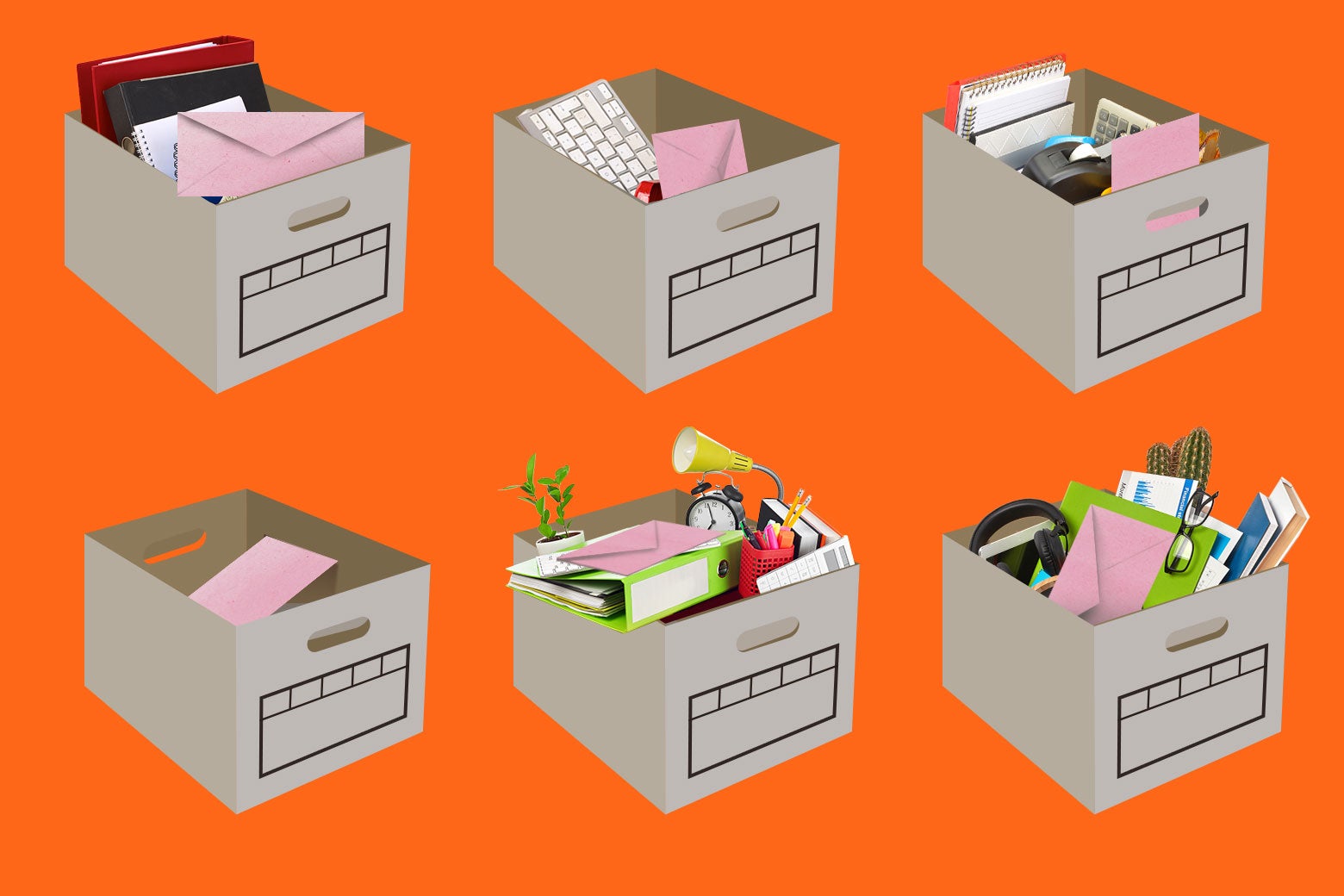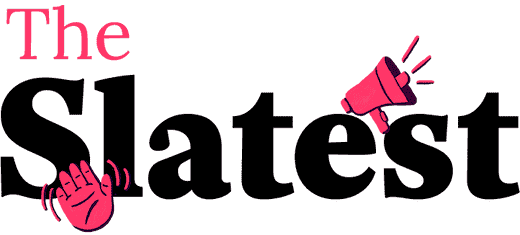Sign up for the Slatest to get the most insightful analysis, criticism, and advice out there, delivered to your inbox daily.
Two summers ago, 35-year-old Melanie Ehrenkranz opened her laptop and found that an ominous meeting had been added to her calendar. Most of her colleagues at the fintech startup she worked for had been invited, and portentously, it was scheduled for less than an hour later. She jumped on Zoom, and 10 minutes later, received the bad news. “The founder was there. He looked very sad and got right to it,” remembered Ehrenkranz. “It was my last day.”
With that, the dehumanizing process of a layoff took hold. Ehrenkranz preserved what she could before she lost access to the company’s Slack archive and email servers, but in her fugue state, failed to hold on to a handful of contacts that might have come in handy during the unemployment that awaited her. She contended with the delirium in some of the few ways anyone knows how: She cried, she went grocery shopping, and she considered (but ultimately declined) a commiseratory happy hour with her fellow discharged compatriots. Mostly, Ehrenkranz felt profoundly vulnerable, and, more crucially, like the only thing she really felt like talking about was her termination—the particularities of its humiliation, the open question of what came next, and so on. So, a year after her ousting ,Ehrenkranz started Laid Off, a Substack newsletter that aimed to give the world’s recently furloughed population an opportunity to say their piece.
“I remember thinking, ‘There’s not a central place where people are talking about layoffs in a way that is specifically for people going through this,’ ” she told me. “It sparked an idea. It was something that I would’ve wanted, and what my friend would have wanted.”
Laid Off’s format is straightforward. Every week or so, Ehrenkranz publishes an interview with someone—a web engineer, a reporter, or increasingly often, a public servant—who has recently been pink-slipped by their former employer. (She found her first sources through, naturally, LinkedIn.) The conversations she has are similar to the ones she had in her own personal group chat after her layoff. She allows her subjects to vent about the indignities they’ve suffered with vibrant outrage: One copywriter recalled being shown the door on his 26th birthday; a production manager opined about getting locked out of her work computer on the last night of her vacation in Mexico. Ehrenkranz threads these conversations with screenshots from the subject’s post-layoff group chats, which makes their venting all the more visceral. One post chronicles all the different titles the newly unemployed have given those chats. They include “Broke Bitches,” “Xooglers,” and “The Departed.” Elsewhere, though, the interviewees express their more material anxieties about the instability they’ve just inherited. How does a layoff affect your ability to keep up with your mortgage? How will it impact your loved ones when you happen to be the breadwinner in your family?
Threaded through all of these conversations is Laid Off’s central conceit—to lose one’s job, due to forces beyond your control, has become something of a bleak ritual in the 21st-century economy. It is a threat always lingering around the corner—especially in industries famous for their volatility. It’s no surprise that many of Ehrenkranz’s subjects work in the rapidly winnowing media business: In 2023 alone, more than 21,400 media jobs vanished. But lately, a culture of precarity has infected career paths once assumed to be financially soluble. Roughly 124,000 tech workers were laid off in 2024, and Meta plans to slash 5 percent of its total headcount by the end of 2025. (Those concerns are becoming more sharp as A.I. begins to invade the workforce.) Even the public sector is no longer safe thanks to the berserking DOGE initiative—the Trump administration has already cleaned out 280,000 people across 27 different government agencies. To be a working person in 2025 is to be fully attuned to the idea that, after one tweak in the algorithm or a fleeting swoon in the market, your role can be deemed redundant. Laid Off, then, aims to contextualize those shocks of unemployment as an endemic feature of the system, rather than the fallout of one’s personal shortcomings.
“One person I interviewed talked about the job insecurity they’ve always felt in a creative field, and that made me realize how I’m used to that idea, and how I’ve trauma-bonded with other people in my industry,” said Ehrenkranz. “But getting laid off has become a pretty universal experience. There isn’t an industry out there that’s safe. It’s an interesting dichotomy: folks who have been weathered by layoffs for decades, versus people who are just now learning what it’s like to watch your peers lose their jobs.”
In that sense, I’m one of the lucky ones. I’ve yet to be laid off—knock on wood—and that is largely due to the fact that I’ve spent much of my adult life as a full-time freelancer. (There are many downsides to self-employment, but at the very least, it’s hard to lose your whole job.) So when I read Ehrenkranz’s interviews, I often find myself sponging up advice and contingencies for the moment when my name finally gets called. One former community manager at Square articulated how best to cold-pitch a hiring manager. (Rather than asking for a job, come to them with a specific inquiry about their career.) Meanwhile, a onetime creative director at Google extolled the virtues of keeping in close contact with colleagues who’ve also been recently axed, since they’re a great sounding board for navigating the messy world of severance negotiations.
“We talk about having rainy day funds, or emergency funds. Things you can do before a layoff happens, and signs that they might be about to happen,” said Ehrenkranz. “I’m hoping to show those things to people before they’re overwhelmed by the new reality.”
Above all, though, talking about a layoff is cathartic, and that is exactly why so many who have gone through the process are willing to jump on the phone with Ehrenkranz. “I don’t think you fully digest what has just happened to you after you lose your job until you talk to your friends and family,” she said. Laid Off reveals that no matter how isolating or humiliating a termination might feel, it does initiate you into a community. “That’s the first step to eliminating that sense of shame,” added Ehrenkranz. “And maybe make some friends along the way.”
After all, Ehrenkranz is a prime example of how, in the long term, a layoff can inspire a glorious period of enrichment—empowered by spite, reflection, and yes, the formless days of severance. She believes that losing a job can conjure a much healthier relationship to work. Or at the very least, allow one to pursue whatever creative projects have been itching the back of their mind. A screenplay, a novel, or, yes, a newsletter about the seismic psychic transformation that hopefully occurs when someone in the C-suite decides that your services are no longer welcome. “It’s important to have something that’s yours. Something that someone can’t take away from me,” said Ehrenkranz. “Even if it’s not paying my bills.”

